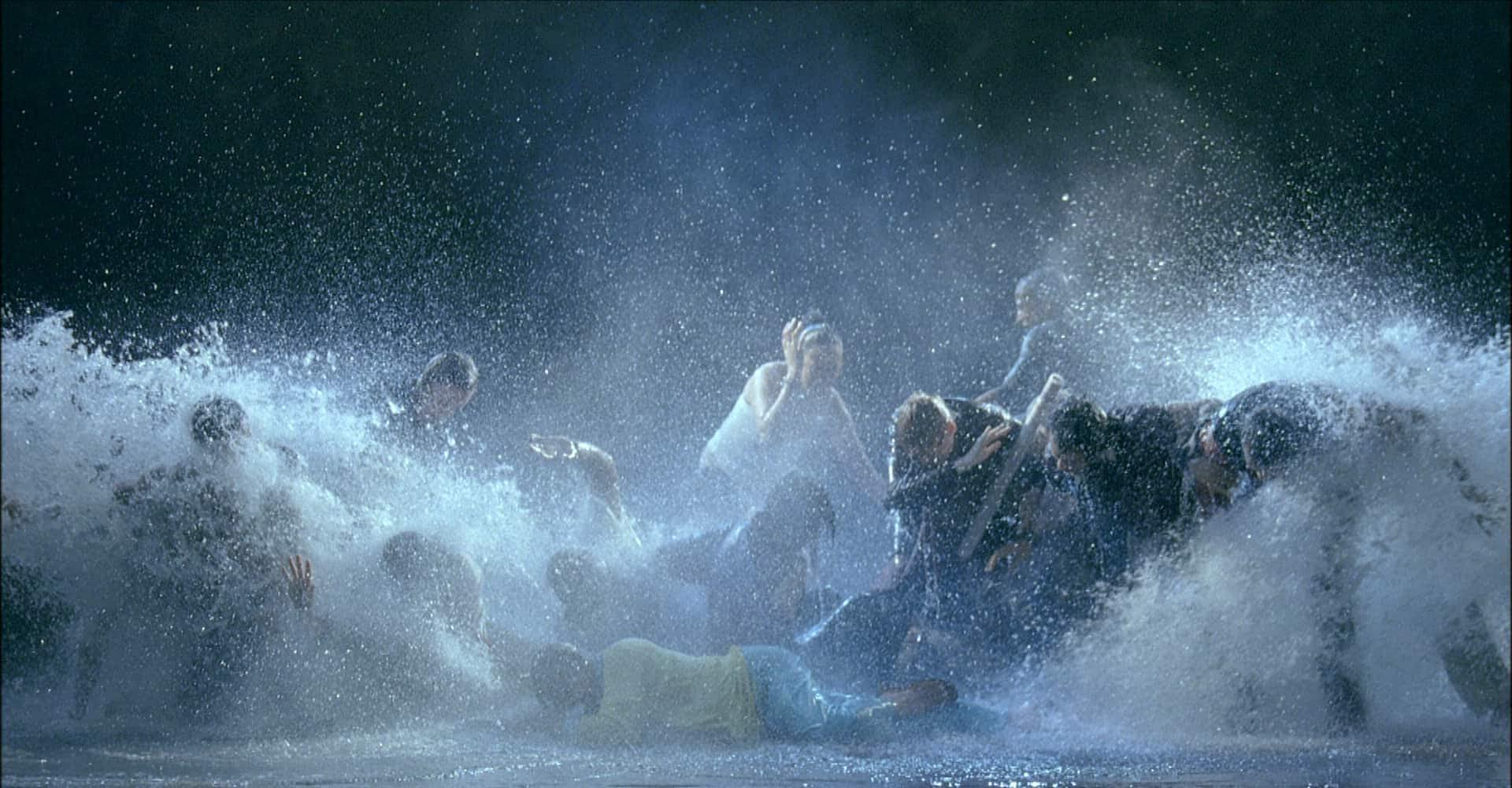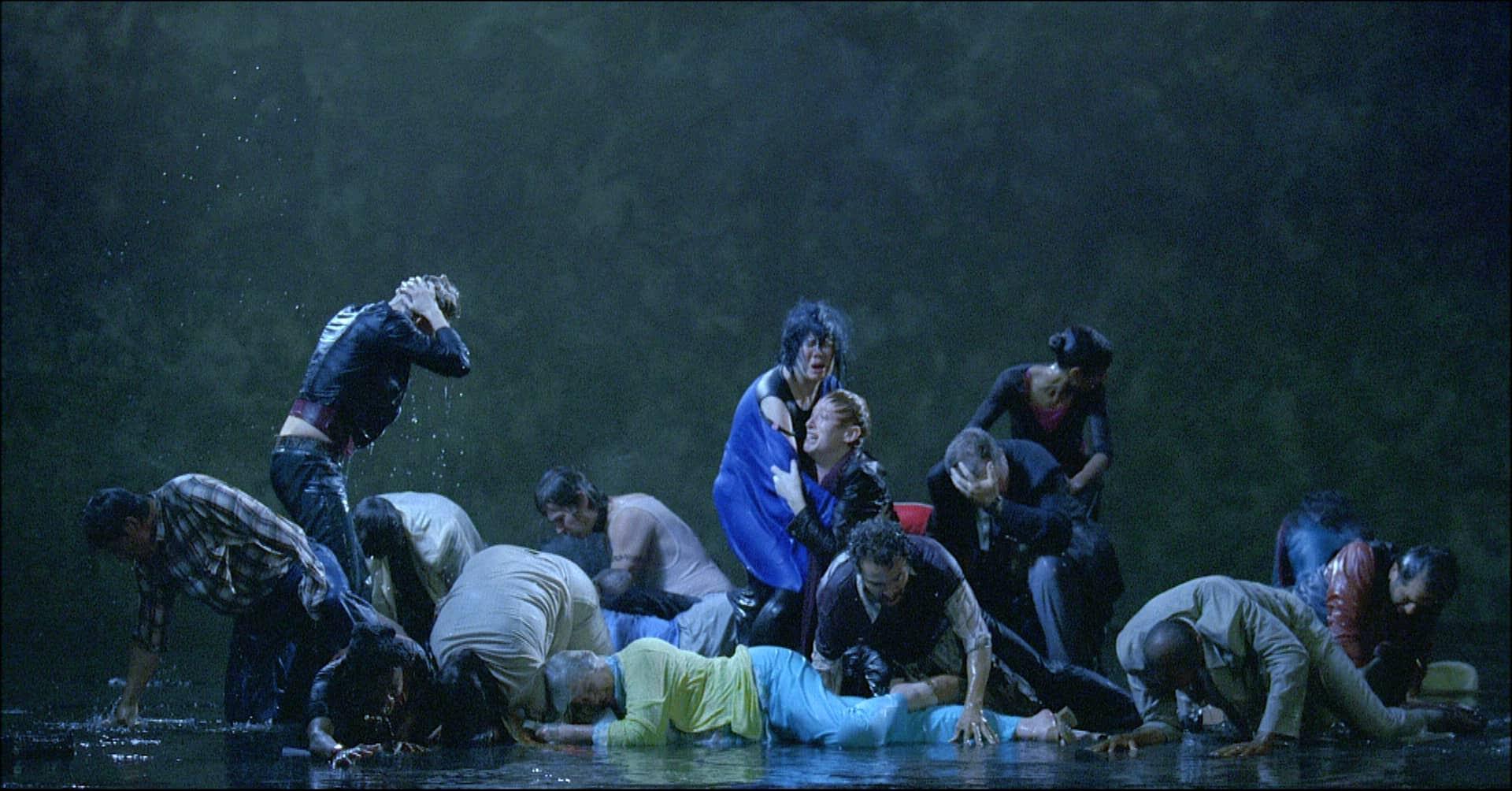“When we originally signed on to be part of this tour, we were interested to explore disaster and the human response through the lens of climate change, which has become very real for our state, our county and our campus,” said Chazen director Amy Gilman. “Now, in the face of the coronavirus pandemic and the national movement around Black Lives Matter, that conversation will become even more poignant and multi-faceted for our students and visitors.”
The Raft depicts, at life-sized scale, a group of ordinary people casually standing together. Suddenly, they are struck by strong blasts of water that rush in, overtake them, and then, just as unexpectedly, recede. In the aftermath of the deluge, the victims huddle together, seek protection and help those who have fallen. The viewer experiences this event in an immersive setting, standing in a darkened room and surrounded by the roaring sounds of the water. Meticulously captured in slow-motion, The Raft arouses a visceral experience of human calamity and shared humanity, provoking a consideration of the range of responses to crisis.
The Raft suggests art historical references, including Théodore Géricault’s iconic Romantic painting, The Raft of the Medusa (1818-19), an over-life-sized depiction of a group of people struggling to survive a ship wreck on a makeshift raft. Additionally, the ensemble’s arrangement across the video screen and labored movements are reminiscent of classical Greco-Roman friezes.
Bill Viola has said that in this world of unstable and often unseen powers, an attack can come at any time for seemingly no reason. For him, it is important that everyone in The Raft survives, a statement of the resilience of humanity.
“It has been a special privilege to collaborate with Bill Viola Studio to bring this powerful installation to new audiences across the country,” said Pauline Willis, AFA Director and CEO. “The AFA is thrilled to continue its commitment to working closely with living artists.”

























![DEl Kathryn Barton [Australian b. 1972] the more than human love , 2025 Acrylic on French linen 78 3/4 x 137 3/4 inches 200 x 350 cm Framed dimensions: 79 7/8 x 139 inches 203 x 353 cm](/sites/default/files/styles/image_5_column/public/ab15211bartonthe-more-human-lovelg.jpg?itok=wW_Qrve3)



